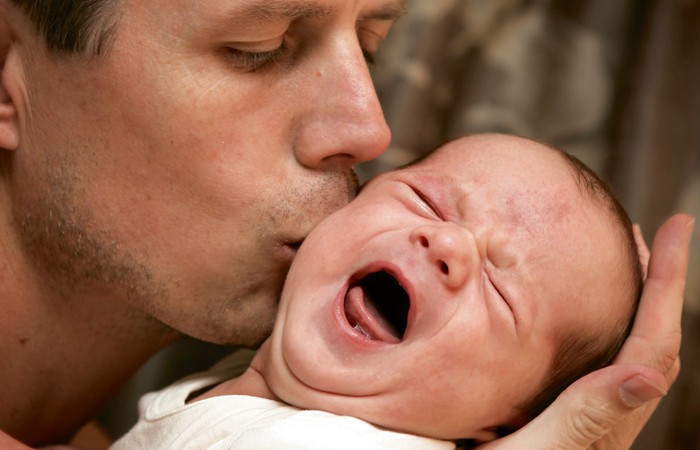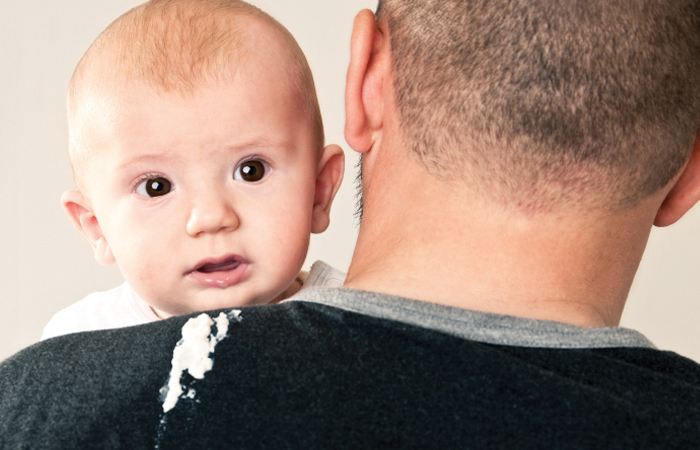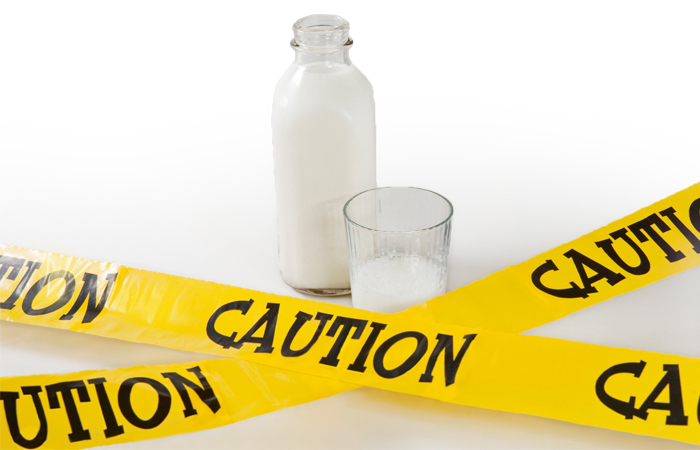Baby on board
In OTC
Follow this topic
Bookmark
Record learning outcomes
Many conditions can affect babies during their first few years of life. Pharmacy teams can help parents manage them and be there to spot when things may be more serious
From feeding issues to chickenpox, babies and young children can be affected by a whole host of conditions. While most of these are common and will clear up quite quickly, parents may seek support and recommendations from the pharmacy team to make their little one feel a bit more comfortable, as well as advice on symptoms that warrant further investigation.

Could it be colic?
Colic is clinically defined as repeated episodes of excessive and inconsolable crying, particularly in the late afternoon or evening, in an infant that otherwise appears to be healthy and thriving. It typically starts during the first weeks of life, improving by around three to four months of age and resolving by around six months. Symptoms can also include a red, flushed face and babies may clench their fists, draw their knees up towards their chest or arch their back.
Colic affects 10-30 per cent of babies – both breast- and bottle-fed – and is one of the most common reasons parents see their GP in a baby’s first three months.
Baby feeding expert and author Clare Byam-Cook says: “You can’t just assume a baby’s crying is due to colic. Always rule out hunger first, especially if mum is breastfeeding and the crying happens mainly in the evenings, when it is common for the milk supply to be low. Firstly, suggest mum tries offering baby some expressed breastmilk or formula milk in a bottle immediately after a normal feed. If baby drinks the milk happily and instantly becomes more settled, it’s not colic. If baby refuses the extra milk and continues to be distressed, it’s likely to be a digestive problem such as wind, colic or reflux.”
According to the National Institute of Health and Care Excellence (NICE), strategies that may help to soothe a crying infant suffering from colic include:
- Holding the baby through the crying episode
- Gentle motion, such as pushing the baby in a pram or rocking their crib
- White noise, such as a vacuum cleaner, hairdryer or washing machine
- Bathing the infant in a warm bath
- Ensuring an optimal winding technique is used during and after feeds, if needed.
Anti-colic drops are available, but these are not recommended by NICE as there is insufficient good-quality evidence for their use.

Tummy troubles
All babies are different and can pass stools from several times a day to once every few days. But what is important is not the frequency, but the consistency, which should be soft and easily passed. Breastfed babies tend to have runnier stools, while bottle-fed babies often pass bulkier stools. A prolonged change to harder, less frequent stools can be a sign of constipation. Other signs include:
- Difficulty or straining when passing stools
- Pain passing stools or with small amount of blood
- Large stools
- Tummy pain
- Poor appetite.
In babies, common causes of constipation include starting solids, changing milk type, a result of dehydration, or a food allergy or intolerance. In toddlers it can be down to insufficient fibre and is more common during potty training. It is important to take care making up formula feeds as too much powder can cause constipation. Babies should be offered extra water between formula feeds if bottle-fed and when starting on solid foods.
At the other end of the toilet troubles spectrum, diarrhoea is defined as loose or watery stools at least three times in 24 hours and can last up to three to five days. Cramps, pains and vomiting are common. The most common cause of diarrhoea in babies and toddlers is rotavirus, which affects almost every child by age five. Babies are now offered a rotavirus vaccine and this has reduced the number of cases.
The main concern in babies and toddlers experiencing diarrhoea is dehydration. Breastfed babies can be given water between feeds and all babies can be offered extra fluids – fruit juice and fizzy drinks are not advised – and continued on their normal diet. In some cases, over-the-counter oral rehydration solution may also be suitable to replace lost fluids and salts. Parents should seek advice if baby has a fever with diarrhoea
or is being sick and unable to keep fluids down.
Colic is one of the most common reasons parents see their GP in a baby’s first three months
Tips on reflux
Reflux is common in babies and is caused by a weak muscle at the end of the oesophagus, known as the lower oesophageal sphincter, which allows some of the contents of the stomach to pass up into the gullet. In most cases this is harmless and does not need treatment, but if it causes poor weight gain and distress it needs further investigation.
As well as bringing up milk or being sick during or shortly after feeding, symptoms include coughing or hiccupping when feeding, being unsettled during feeding, swallowing or gulping after burping or feeding, crying and not settling, and not gaining weight due to not keeping enough food down.
“Giving smaller, more frequent feeds can help. You may need to hold baby upright for some time after a feed before putting them down for a nap. Also try raising the head of the cot or Moses basket,” says Clare.
Zoë Ellis, senior medical affairs manager at Nutricia, highlights that in some cases, specially designed formula milks may be suitable. “For formula fed infants with common feeding problems, specialist milks that contain specific ingredients could help with the management of signs and symptoms of functional GI [gastrointestinal] disorders,” she says. “These specialist milks must only be used based on an infant’s individual needs and under medical supervision, on the advice of a healthcare professional responsible for maternal and childcare.”
Parents can also be advised to wind the baby throughout feeds, avoid over-feeding – smaller, more frequent feeds are best – and try using a slow-flow teat so the baby does not feed too quickly.

Pesky pox
Chickenpox is caused by the varicella zoster virus and most children get it by the age of 10. Symptoms include fever, aches and a headache one or two days before the rash appears. Tiny spots form into small itchy blisters, which appear anywhere on the body, and then scab over. Poor appetite is common. Children usually recover within a week, though scabs can take up to two weeks to heal.
Treatment options include:
- Paracetamol to reduce fever. Note that ibuprofen is not suitable for chickenpox due to an increased risk of serious skin infection
- Emollient cream or calamine lotion to soothe itchy skin
- A sedating antihistamine at bedtime to help itching and aid sleep
- Keeping fingernails short to stop scratching
- Giving plenty of fluids to avoid dehydration.
Anti-viral medication is available, but only usually given to adults and teens who develop the condition, or for children with compromised immune systems.
Children with chickenpox are infectious from two days before the rash appears until all the spots are crusted over. Children should be kept at home to avoid spread. They should avoid contact with pregnant women who are not immune and anyone with a poor immune system.
Temperatures rising
Fever is the body’s way of fighting off infection and in babies and toddlers many things can cause a high temperature, from coughs and colds to vaccinations. A normal temperature in babies and toddlers is 36.4°C and a fever is 38°C and over. The best way to check is by using a digital thermometer.
Fever is very common in the under fives, and between three and four parents in 10 say their child has had a fever in the past year. A child with a fever will feel hotter than usual on the forehead, tummy and back; feel clammy or sweaty; and have red cheeks.
In most cases it can be treated at home by giving plenty of fluids, checking on the child regularly during the night, keeping the child at home and giving age-appropriate paracetamol or ibuprofen. It is not necessary to undress the child or sponge with cold water, but parents should ensure the child is not too warm with lots of layers of bedcovers.
Some children have a type of fit when their temperature rises quickly, which is known as febrile convulsion. It is most common between the ages of six months and three years. A febrile convulsion lasts less than five minutes and the child will become stiff and arms and legs may twitch; they may lose consciousness and wet or soil themselves. A child should be placed in the recovery position during a seizure.
While it is normally harmless, if it’s the child’s first seizure, parents should take the child to hospital or call an ambulance – likewise if it lasts for longer than five minutes, if the child has breathing difficulties or if the parent suspects it might be caused by serious illness.
Fever red flags
When their baby has a fever, parents should be referred to the GP if they have any of the following signs:
- Fever of 38°C in babies under three months
- Temperature of 39°C plus in babies aged three to six months
- Any other signs, such as a rash
- Temperature lasting over five days
- Not eating or feeding
- Temperature does not reduce after paracetamol or ibuprofen
- Any signs of dehydration.
Cows’ milk allergy explained
Digestive problems in babies are commonly caused by cows’ milk allergy (CMA) or lactose intolerance. “CMA is a reaction to the protein in milk, affecting the immune system. Lactose intolerance is when the body doesn’t produce enough of the enzyme lactase which helps break down the sugar lactose in milk. With lactose intolerance, usually some milk products are tolerated and lactose-free milk can be used, but in CMA all milk-containing products have to be avoided. CMA is more common in infancy than lactose intolerance,” explains registered dietician Sarah Khweir at the British Dietetic Association.
The causes of CMA are still largely unknown, but children may be at higher risk if they have a family history of allergic disease including asthma, hayfever and eczema. In lactose intolerance, some children are born without the enzyme to help break down lactase. More commonly, lactose intolerance happens after an infection such as gastroenteritis, or due to a condition such as Crohn’s or coeliac disease.
“The main symptoms of CMA are swelling, red, itchy mouth, lips or eyes, gut problems including diarrhoea, constipation or vomiting. Babies may also have poor growth. Signs of lactose intolerance are diarrhoea, bloating, wind and stomach cramp,” says Sarah.
For CMA, children must avoid all cows’ milk protein milks and other milks with similar proteins, such as sheep and goats’ milk. For breastfed babies, mums must exclude all milk products from their diet. Children usually grow out of CMA. For lactose intolerance, children should be given lactose-free milk, cheese and yoghurt.

Cradle cap
This is a type of seborrhoeic dermatitis characterised by greasy, yellow, scaly patches of skin on the scalp and sometimes the t-zone of the face. “The causes are not fully understood, although the yeast Malassezia furfur has been strongly indicated. It’s also thought maternal androgens may play a part,” says consultant dermatologist Dr Adil Sheraz, a British Skin Foundation spokesperson. “The scales are asymptomatic, with a greasy feel to them. Eczema, on the other hand, is non-greasy and itchy and can present on a variety of sites on the body.”
Parents won’t always need to treat cradle cap. “However, a gentle emollient and soft brush can be used to lift off scales, or baby oil, olive oil or petroleum jelly can be used. Also 1% hydrocortisone ointment is safe to use,” says Dr Sheraz.
A mild baby shampoo can be recommended for use after using oil to treat, then a soft brush to remove flakes of skin.
Nappy rash
Most babies develop nappy rash at some stage. If it’s mild, it should resolve easily with regular nappy changing, barrier cream and keeping the area dry. Dr Sheraz has these tips to pass on to parents: “Ensure the nappy fits well, as a tight nappy can cause irritation. Consider wet wipes as a possible irritant and only use water wipes free from fragrances and preservatives. Avoid soap and bubble bath. Change baby’s nappy every three to four hours and try to leave off as long as possible to dry out skin.”
For mild nappy rash, a barrier cream such as zinc and castor oil or white soft paraffin can be recommended. If rash is inflamed and the baby is distressed, 1% hydrocortisone can be used before the barrier cream.
Bacterial meningitis is most common in children under a year old
Dried out
Around one in five children have eczema in the UK, with 80 per cent developing it by the age of five. Eczema appears as patches of sore, itchy skin on the face and in skin creases in children. Children with eczema often also have hayfever or asthma.
Dr Adil Sheraz, consultant dermatologist and British Skin Foundation spokesperson, advises pharmacy teams to:
- Discuss possible triggers with parents such as pets, dust mites, central heating, other allergies
- Recommend liberal use of emollients
- Ask parents to consider a mild steroid such as 1% hydrocortisone ointment
- Recommend the heating be on for shorter periods in winter
- Recommend an anti-histamine such as chlorpheniramine to help relieve itch and help their baby sleep.
“If skin is weeping or has a golden crust, baby may have an infection and should see the GP for a swab test,” adds Dr Sheraz.
It can be difficult to know how much emollient to use on babies, so Dr Sheraz suggests pharmacy teams “discuss fingertip units (FTU). For babies three to 12 months, one FTU is enough to cover face and neck. Five FTUs is enough for front, back and buttocks. Use one FTU per arm and hand. Use five FTUs per leg and foot.”
Vital vaccinations
Vaccinations prevent up to three million deaths worldwide every year and are the best way to protect children’s health and the wider population.
Vaccines eradicate or greatly reduce serious infectious diseases such as diphtheria, polio and measles. The World Health Organisation (WHO) recently listed vaccine hesitancy as one of their top 10 biggest threats to global health. Cases of measles and mumps have double in England in recent years as a result of babies not having the MMR vaccine.
Parents may ask about side effects from vaccines. These are usually mild and short-lived and can include red, swollen area where needle goes into skin, children feeling a little unwell for one to two days and developing a fever. Allergic reactions are very rare and normally occur within minutes.
Babies can be given a dose of infant paracetamol after vaccinations to reduce a fever.
Teething pains
Most babies start teething at around six months of age. Not all babies suffer from discomfort when teething, but parents may notice:
- Sore red gums
- Flushed cheek
- Increased dribbling
- Increased chewing
- Irritability.
There is a lack of evidence that teething gels are effective. It's recommended that parents try non-medical options for teething first, such as a teething ring cooled in the fridge. This can distract the baby and give them something to chew on, which can help ease discomfort. Paracetamol or ibuprofen can give relief from pain. Homeopathic teething gels, granules and powders are also available, although there is no evidence that they are effective.
Getting serious
Babies can become unwell quickly and it is important to recognise the warning signs of potentially serious health problems and know the appropriate referral processes for urgent medical care.
Pneumonia
Pneumonia is inflammation of the tissue in one or both lungs. It is usually caused by a bacterial infection and tends to develop suddenly over 24 to 48 hours. The key symptoms for children are a temperature over 38.5°C and rapid breathing, or difficulty in breathing. Other common symptoms include:
- Cough
- Laboured breathing that makes the muscles under a child’s rib cage draw inwards
- Vomiting
- Chest pain
- Abdominal pain
- Decreased activity
- Loss of appetite (older children) or poor feeding (infants)
- In extreme cases, bluish or grey lips and fingernails.
Parents should seek urgent medical advice and have the baby assessed quickly.
Sepsis
Sepsis, also known as septicaemia or blood poisoning, is the immune system’s overreaction to an infection or injury, resulting in it attacking the organs and tissues. If not treated immediately, sepsis can result in organ failure and death, but with early diagnosis it can be successfully treated with antibiotics.
Dr Ron Daniels, founder and executive director of the Sepsis Trust, says parents should watch out for six main signs in children and seek urgent medical help if they notice their child:
- Breathing very fast
- Having a fit or convulsion
- Has skin that looks mottled, pale or bluish
- Has a non-fading rash
- Is lethargic and hard to wake
- Feels very cold to the touch.
In children under the age of five, not feeding, vomiting repeatedly or not passing urine in 12 hours are signs of sepsis and also require urgent medical attention.
Meningitis
Meningitis is an infection of the protective membranes that surround the brain and spinal cord (known as the meninges) and can be bacterial or viral. There are still around 10 cases per day of meningitis in the UK, despite vaccinations to protect against it. It can affect anyone but is usually more common in children and young people. Bacterial meningitis is most common in children under a year old and teenagers.
Whether bacterial or viral, symptoms develop suddenly and can include:
- A high temperature
- Being sick
- A severe headache
- A non-fading rash
- A stiff neck
- Aversion to light
- Drowsiness or unresponsiveness.
- Any child with these signs should be admitted to hospital urgently.
The most commonly known symptom of meningitis is a distinctive rash, which looks like small bruises, although this does not affect everyone and may not be visible when the other symptoms develop. If a rash does develop, it is important to use a glass to press on the rash – if it does not fade when this is done, immediate medical help should be sought.
